#Taylor st Baristas
Note
So I know you don’t answer many questions from- across the pond, as it were, but I don’t need any legal advice, and I’m at my wit’s end. I’m hoping you can help.
So my genus is very small. In point of fact it’s just my family, as far as I know, and it’s only ever one creature active at a time- bunch of sapios doing sapio things, then the previous Creature dies or sees the Signs and boom! One of us Wakes and hey look at that, new Hierophant! And as the current Hierophant I Speak and Am Heard- part of the reason I’m writing to you.
A part of my genus is acting as the mouthpiece for a portent of the apocalypse. That's not a secret- hell, its why the town has the name it does and why the family name's on the radio station. Predictably, I am the foremost DJ on 226.5, the Voice of Birch.
It’s not a bad gig, per say. I go to work and between the traffic reports and the local top forty I give an update on the eventual Coming of The Burned Birch. It never lasts long and my local community really likes it. The Birch sort of became a touristy thing, you see- awesome in the autumn, all its leaves yellow and glowing with ghostfire.
Well, so they tell me. I can't actually LOOK at the Birch-if I do, I'll go by way of great uncle Milton and turn into salt. Thank goodness pictures and art don't count or we'd have to move the station and the whole family into the old mica mine.
The Birch likes being appreciated and turned into post cards and calanders, though. It’s a bit of a show off, really. I guess I’d be showing off if I were a tree that could move around at will.
The problem is that lately, the Birch has been sending me updates at the most inconvenient times. It's generally a twice a day thing, but now I’ll be brushing my teeth at five AM and the whole town hears me ominously spouting coordinates and warning of the cracking of the earth and rising of the dead. The Birch can’t even make the dead rise, there’s been wards on the local cemetery for a century!
Or I’ll be making an order at my coffee shop and suddenly I’m telling poor Taylor the barista that the trees come down the mountain to open their fiery branches to the burnished sky.
The worst of it is at ten or eleven at night when I’m trying to settle into bed. My hometown is very small and quiet, so most folks are in bed early unless they’re nocturnal like the coven that runs the night shift at the bakery. I’ll be drowsing, mind floating off to dreamland, and all of a sudden I’m bolt upright in bed declaring that West Street’s pavement is going to shatter with the feet of elder gods, flee the Burned Birch, flee! People are losing sleep.
It's getting out of hand. I’m not in danger of losing my job or anything (not even sure I can be fired, to be honest) but when you live in a town with less than two thousand people and everyone knows you’re the Hierophant of the Burned Birch, well. That's me avoiding the next St. Mary's rummage sale.
I know you always say communication is key and I’ve tried, believe me. All the old methods- blood rituals under the full moon, a cracked labradorite under my pillow, whispering to the moths- it hasn’t worked.
There's nothing in the family archives about the Burned Birch acting like this and frankly, I’m worried. Is there something wrong? Some rot or fungus that infects only apocalyptic omen trees? Is it trying to reach out to me for help? I can't go look at it and my friends tell me it looks fine. They show me pictures and my omen looks fine! How do I tell if it’s being needy or if it’s being obnoxious? and how do I hang on to my declarations without a three hour nosebleed?
Literally anything you've got will help, at this point. Thanks in advance!
-Fat Ricki, The Voice Of Birch
First of all, may I say how lovely it is to hear from another radio professional? Liminal broadcasting is a topic close to my heart, and it's always nice to hear from others in the field.
To your question, I think your first job is to absolutely rule out the possibility of any physical or magical ailment your tree might be suffering.
You said you've had friends inspect the tree, and have looked at photos to assess the situation yourself. But tree diseases are not always easy to spot with the naked eye, especially to the untrained. This is doubly true for thaumaturgically active trees, which may be susceptible to infections, infestations and diseases on several planes of reality.
I recommend investing in the services of a trained arboreal arcanist. In the United Kingdom, customers can find specialists through the Arcane Arboricultural Society, whose members must meet the societies standards of professionalism and training. If such an organisation exists in your area, all to the good.
If not, take some time to read up on professional qualifications available to tradespeople in your state. You want someone qualified in thaumaturgic horticulture, and preferably with the ability to perceive reality on at least three additional planes, if not more.
There are several pests and diseases that might be causing your tree's distress, from spectral bacteria to ether flux. Better to invest a little time and money in ruling those out than risk leaving them untreated.
I think it's safe to say your tree is trying to get your attention for some reason. Once you've ruled out disease or discomfort as the possible reason, consider what else might have changed since this behaviour began. Has it been receiving fewer visitors than usual, or perhaps been the subject of a less-than-flattering news article?
Many apocalyptic trees, shrubs and bushes have a tendency to fussiness and egotism. It's very possible that your tree wants nothing more than to be the subject of a bit of ego-stroking fuss. You might try drumming up a few more visitors and acolytes, or performing a ritual of appeasement that recognises its great and terrible power.
The phrase “attention-seeking” carries with it a host of negative connotations. Instead, think of this as “support-seeking” behaviour. There is a need your tree feels is unmet, and as its Hierophant, it's up to you to meet it. With a bit of reassurance and attention, I think your tree should settle down into its usual ways in no time.
[For more creaturely advice, check out Monstrous Agonies on your podcast platform of choice, or visit monstrousproductions.org for more info]
35 notes
·
View notes
Text
muse list.
dc comics
brooke larson. mid-twenties. high end escort, childhood friend of jason todd. bisexual. fc: sophie cookson.
gabriela ribeiro. early-thirties. heiress & horse trainer. heterosexual. fc: isis valverde
gia tedesco. twenty-eight. real estate agent, daughter of a mob attorney. bisexual. fc: danielle campbell.
larken forrest. thirty-three. assistant to bruce wayne at wayne enterprises, single mom. bisexual. fc: dakota johnson.
fandomless
amelia thomas. twenty-two. royal princess & college student. heterosexual. fc: elle fanning.
anika singh. thirty-eight. boutique owner & fashion designer. heterosexual. fc: freida pinto.
arden waverly. thirty-three. hacker. lesbian. fc: kristen stewart.
aurora gray. thirty-three. professional organizer. bisexual. fc: laura harrier.
bianca reyes. twenty-four. jewelry designer & daughter of a mob boss. panromantic. fc: lucy alves.
calista st. james. twenty-three. tik tok famous dog trainer. heterosexual. fc: halle bailey.
charlotte stewart. thirty-five. high school guidance counselor. bisexual. fc: amanda seyfried.
chloe chapman. twenty-seven. waitress. heterosexual. fc: katherine mcnamara.
eliana hirsch. fifty-two. children's book author. bisexual. fc: jennifer connelly.
erin clarke. twenty-nine. con artist & wanted criminal. pansexual. fc: crystal reed.
evangeline 'evie' lasko. forty-one. runs a bed & breakfast. bisexual. fc: alexa davalos.
gillian west. forty. couples therapist. heterosexual. fc: anne hathaway.
hannah parker. thirty-five. dog day care employee & serial killer. bisexual. fc: aubrey plaza.
hazel wells. twenty-eight. private chef. bisexual. fc: florence pugh.
ireland cardoza. twenty-five. actress. lesbian. fc: camila mendes.
jenna wilder. twenty-three. hotel heiress & trust fund baby. bisexual. fc: sabrina carpenter.
joelle hart. thirty-four. personal trainer. bisexual. fc: megan fox.
june soto. twenty-nine. drug dealer. pansexual. fc: mia goth.
kitty moran. twenty-five. exotic dancer. roommate & co-worker of quinn. bisexual. fc: taylor russell.
leah corbin. twenty-five. thief. heterosexual. fc: mia goth. ( private muse with @anunkindncss )
liliana gregory. twenty-four. model. heterosexual. fc: barbara palvin.
lucy zhao. twenty-five. journalist & blogger. lesbian. fc: havana rose liu.
mackenzie abrams. twenty-six. photographer & political activist. heterosexual. fc: emmy rossum.
maia madden. twenty-eight. hollywood publicist. bisexual. fc: simone ashley.
miranda westbrooke. fifty-one. advertising ceo. bisexual. fc: rachel weisz.
naomi taylor. twenty-two. nanny. heterosexual. fc: kaia gerber.
natalia marquez. forty-eight. funeral home director. heterosexual. fc: penelope cruz.
quinn strauss. twenty-three. exotic dancer. roommate & co-worker of kitty. pansexual. fc: bella thorne.
reese edwards. thirty-four. physical therapist. bisexual. fc: nathalie emmanuel.
simone diamond. twenty-six. pop singer. bisexual. fc: taylor swift.
sloane meyer. thirty-eight. er surgeon. pansexual. fc: sophia bush.
sutton bradley. forty. pediatrician. lesbian. fc: piper perabo.
teresa mancini. twenty-nine. mob wife. heterosexual. fc: simona tabasco.
tinsley palmer. twenty-five. thief. bisexual. fc: ella purnell.
valentina alvarez. twenty-six. kindergarten teacher. heterosexual. fc: camila morrone.
vienna patrick. forty-one. trophy wife & socialite. heterosexual. fc: rachel mcadams.
willow donovan. twenty-two. college student & barista. bisexual. fc: madelyn cline.
zya fox. twenty-five. makeup artist. bisexual. fc: coco jones.
house of the dragon
eloise belfron. eighteen. lady in waiting to helaena targaryen. heterosexual. fc: rose williams.
marvel comics
yasmin ayala. thirty-two. bartender at josie's & dance instructor. heterosexual. fc: ana de armas.
the musketeers
mary turner. twenty-six. doctor's assistant. heterosexual. fc: gugu mbatha-raw.
outer banks
daisy pierce. seventeen. pogue. high school student & waitress. heterosexual. fc: kristine froseth.
shelby beckett. nineteen to twenty-one ( season dependent ). lifeguard. heterosexual. fc: danielle campbell.
scream
brooklynn foster. eighteen. final girl. bisexual. fc: khadijha red thunder.
sons of anarchy
thea montgomery. twenty-seven. mechanic. heterosexual. fc: riley keough.
succession
clementine roy. twenty-four. interior designer & illegitimate child of logan roy. heterosexual. fc: alexandra daddario.
titanic
florence 'flo' reynolds. twenty-five. stage actress. heterosexual. fc: hannah dodd.
twilight
abagail barrett. one hundred & fifty ; appears early-twenties. vampire. bisexual. fc: madelaine petsch.
misty frasier. forty-six ; appears mid-twenties. vampire. heterosexual. fc: julia garner.
the x-files
marissa lucas. thirty-one. cashier & alien abductee. bisexual. fc: shannyn sossaman.
zelda mulder. twenty-two. paranormal private detective. pansexual. fc: margaret qualley.
5 notes
·
View notes
Text
𝐞𝐝𝐝𝐢𝐞 𝐦𝐮𝐧𝐬𝐨𝐧 𝐦𝐨𝐨𝐝𝐛𝐨𝐚𝐫𝐝

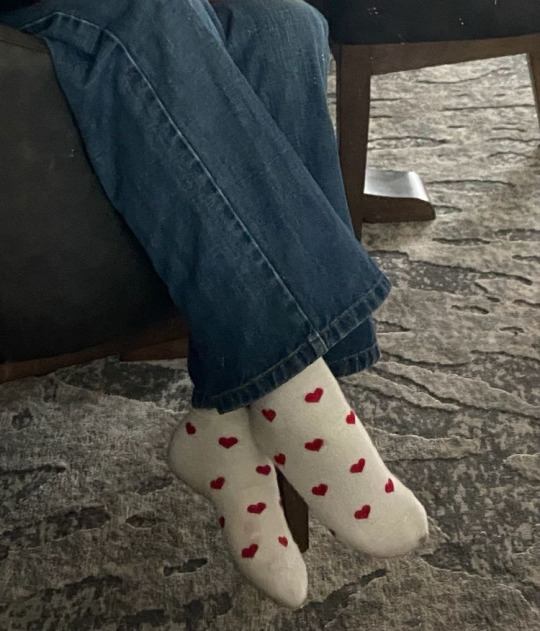

eddie
self indulgent
witch
wednesday
winter (fem)
baking
warm
mechanic/cowboy
cowboy like me
i love cowboys
spring picnic
lovely day
eras tour
lust for life - lana del rey
getaway car - taylor swift
sneaking out
road trip
ultraviolence - lana del rey
dykttatuob - lana del rey
small town love
skater
nap time
90s inmate
fairy
what it should’ve been
vanessa the mermaid
girly girl
cryptic academia
captain (hook) eddie
wildest dreams - taylor swift
rockstar girlfriend
tim mcgraw - taylor swift
eddie the fairy
oceanside living
say yes to heaven - lana del rey
4th of july fair
forest life
the orange by wendy cope
he’s not the only guitar player
st. cloud
the devil
ghostface
small town living
fall in nyc
loser!barista!eddie
lost files
under the mistletoe
11 notes
·
View notes
Text

Pastor Stuart B. Latimer, age 84, of Taylors, SC, went to his heavenly home on Thursday, September 7, 2023.
Stuart was born to George and Florence Latimer in Hamilton, Ontario, Canada. He was active in Youth for Christ in Hamilton during his teenage years. He graduated Valedictorian from Saltfleet High School and decided to attend Bob Jones University. Stuart met his wife Charlotte Polk from Frostproof, FL at Bob Jones, and they were married in 1962. He went on to receive his Master in Biblical Studies and completed post-master’s studies at BJU while teaching at the university.
Stuart became a USA citizen in 1971. He was ordained to the gospel ministry in 1972 and helped found Peoples Bible Church in Greenville, where he pastored for 22 years and had significant ministries to Furman and Clemson students. Stuart and Charlotte hosted thousands of college students in their home for meals and discussions throughout their ministry. Stuart was a popular speaker at family conferences, youth retreats, college retreats, and pastoral conferences.
Stuart lost his knee to a shotgun blast from a robber on a mission trip to Trinidad in 1994, but one of his former Furman students was able to save his leg. For the rest of his life, he was known for his walking stick with a carved turtle at the top which he called a “great conversation starter” (as though he needed one of those!). He joined the Associate Reformed Presbyterian denomination where he pastored Devenger Road Presbyterian Church for 15 years. After retiring, he continued to preach at multiple churches in South Carolina and Georgia, including regular preaching at Living Hope Presbyterian Church in Greer, SC. During the last year of his life, Stuart and Charlotte were encouraged by the television ministry of First Presbyterian Church, Greenville and by the in-home ministry of the pastoral staff.
He was an honorary cheerleader at Shannon Forest Christian School in the 1980s where his children attended, and he was known for the bellowing cry “Go Shannon Forest!” He was a huge Clemson fan and proudly wore a bright orange jacket wherever he roamed. His love for his children’s school and university is only surpassed by his love for their children. He loved spending time with his grandchildren, talking to them, joking with them, grilling them, and other assorted adventures with Papa. Stuart and Charlotte loved traveling together during their retirement years, including two trips driving to Alaska, all the way to the Artic Circle.
Throughout his life, Stuart wrote “Letters of Encouragement” (and later emails) to waiters, store clerks, baristas, friends, visitors, relatives, strangers on the street—anyone he had the opportunity to meet, even briefly. God gave him the gift of encouragement and a warm smile which he used to influence many lives. He believed the Bible is God’s love letter to us and wanted everyone to know that they were “worth more than the whole world put together.”
He is survived by his beloved wife of 61 years, Charlotte; his daughter, Michelle, her husband Jay Case, their children Elena and Alexander; his son, Stuart Jr., his children, Grace Anne (Thomas) Henley, William, and Lewis; and his sister, Marion, her husband Dave Pyke, and their children and grandchildren. Stuart was a loving husband, brother, father, and grandfather—he will be impossible to replace.
Services for Stuart will be held Thursday, September 14, 2023. Visitation at 12:00 pm followed by a Funeral Service at 1:30 pm at First Presbyterian Church, 200 W. Washington St., Greenville, SC.
In lieu of flowers, donations may be made to Hospice of the Foothills 390 Keowee School Rd. Seneca, SC, 29672 or to Samaritan’s Purse.
#Bob Jones University#BJU Hall of Fame#2023#Obituary#BJU Alumni Association#Stuart B. Latimer#Associate reformed presbyterian#People's Bible Church#Devenger Road Presbyterian Church#Class of 1951#Jay Adams#Estranged#Heritage Bible Church
1 note
·
View note
Text
Kambah Turns 50 - planning for Sep 2024 for a community celebration
On Sat 26 Nov, a few of us met at the Diversity Hub on Laidlaw St to have a chat about how to mark Kambah's 50th.
Unfortunately, the sheep at the shops proposal was not successful with ArtsACT but that doesn't mean it's a bad idea. That was about making temporary flocks of sheep for each shops and getting the community to decorate them.
Kambah Turns 50 - a draft schedule for Sep 2024
Sat 7, Sun 8 Kambah Open
All the community/business/groups in Kambah open their doors to the community (everyone we can think - artists, gardens, clubs, shops, Youth Haven, churches)
Evening bonfire - ideal if we can do it on private land (not sure how likely that is)
Bushband, dance party (rave)
see-change e-bike tours of Kambah??
Sun 15 Well-being day
Urambi Hills weed-out/plantings, yoga, sports clubs come-and-try, cooking, gardening
Reiki day
Diversity hub
Thurs 20 Tuggeranong Arts Centre exhibition Kambah Turns 50 opens
Sat 21, Sun 22 Sep Kambah artists weekend - events by the artists
Sat Sun 28/29 Sep (noting this is Grand Final weekend)
Kambah and surrounds waterways/celebrating the river
Oct long weekend - Sports focus? Bbq
Here are all the ideas we haven't slotted in or resolved.
Yet to work out how to:
Other groups/events we should connect to eg Uncharted Territory festival July 2024; Design Canberra; ACT Heritage Week; National Tree Day; other 'Days'
Sheep at the shops - still do it?
Long table lunch near COGS or Diversity Hub
Ian Marr stone sculpture for Urambi Hills - how to do that?
use the opportunity to do more for the environment centre/Food forest Sustainable grassland - btw diversity hub and cogs - kambah see-change
include a Barista battle - waiters race
do more for/with music
have a kids/family day - might be Kambah Open
involve religious community
car culture
heritage - Glenn's walks? Kambah history day?
1970s design and landscape design features??
Who to include in Kambah Open weekend or a day
Cogs
Five ways
Lions youthhaven
The Farm and music
Golf course - driving range
Burns club
Tennis club
Diversity hub
Urambi hills group
Mt Taylor parkcare
Coleman ridge
Kambah see-change
Other ideas to work in
Cleaning World Cup - Singapore - can we emulate that?
River health
Family day ideas:
Collect and make - kambah rock hunt;
Pet rock workshop and garden
Gameify a behaviour - eg rubbish pick up
0 notes
Text
16 Iuchar 2566 EB/ July 16, 2023
Catholic sabbath. Love you Reaper. Listened to as much as I could of Taylor Swift’s Midnights.
my barista in a room in Milwaukee that resembles the Joseph Smith Memorial Buuldin fun Building in SLC said her first Taylor Swift album was midnights. Can you imagine what her life is going to be like?
listening to as much as I can of that today, in solidarity with her.
Hope St. Patrick gives you all a rad day
working on a project for the Utah Republican Party
0 notes
Text
◜ •° ☥ 𝐀𝐂𝐂𝐄𝐏𝐓𝐄𝐃 ! welcome to st. diablo, OPHELIA BERNAL & OSWALD MCGREGOR. you have 24 hours to send in your account. jeanine mason & daniel sharman are now taken. please be sure to read over the guidelines if you haven’t already and we can’t wait to write with you !
◜ •° ☥ 𝒔𝒕. 𝒅𝒊𝒂𝒃𝒍𝒐 𝒘𝒆𝒍𝒄𝒐𝒎𝒆𝒔 𝒚𝒐𝒖 … OPHELIA BERNAL has been spotted in the streets of st. diablo . many say she is a VAMPIRE that arrived TWO WEEKS. the THIRTY - FIVE year old works as a BARISTA AT CODEX BOOKSHOP in st. diablo . people say that they remind them of DOG EARED BOOKS , BITTERSWEET ENDINGS , HEART SHAPED EARRINGS , THE SCENT JUST AFTER STORMS , AND WILTED ROSES . * ( jeanine mason , taylor , twenty - one , she/her , est )
◜ •° ☥ 𝒔𝒕. 𝒅𝒊𝒂𝒃𝒍𝒐 𝒘𝒆𝒍𝒄𝒐𝒎𝒆𝒔 𝒚𝒐𝒖 … OSWALD ‘OZ’ MCGREGOR has been spotted in the streets of st. diablo . many say he is a HUMAN that arrived THIRTY - ONE . the THIRTY - ONE year old works as a BARTENDER AT LAST RITES in st. diablo . people say that they remind them of FADED TATTOOS , BURDEN OF DISAPPOINTMENT , OLD MUSIC PLAYING THROUGH A CRACKLING RADIO , WHITE SCARRED KNUCKLES , AND FALSE SMILES . * ( daniel sharman , taylor , twenty - one , she/her , est )
0 notes
Text
VOCAL VALENTINE
TO: IVY ST. JAMES
FROM: SECRET ADMIRER
MESSAGE: break a legs at regionals!
Making their way through the doorway of the Lima Bean, Miles spotted Ivy first and nodded his head for Otto to get ready to cue the music. The Lima Bean wasn’t his first choice in performance venues, but it would have to make due. Ignoring his instincts to call her a rude name, he cleared his throat as he prepared their announcement. “Ivy St. James,” he smirked. “This is from your secret admirer,” he explained before playfully rolling his eyes.
“Break a legs at Regionals,” Otto said, finishing up their introduction of the song. Thankfully, the pleasantries with Ivy were over and the music could kick into high gear. The sounds of Love Story filled the establishment as Otto began singing and dancing around.
Miles was always good at pretending as if he were performing at a preferred location for a preferred audience. There was a smile plastered on his face as he took over the singing from Otto. It definitely wasn’t his first choice to be stuck performing a Taylor Swift song for Rumpelstilskin, but he got lost in the moment as he danced around her, even leaning down into her space to send her a wink.
By the time the chorus rolled around, Otto was having her own fun with the performance, singing in harmony with Miles as she swayed to the beat. She made her way around the restaurant and involved some of the other customers, making it a point to lean down and sing to them as well. They eased into the song’s ending, both coming to a breathless halt once the music dissipated.
“Happy Valentine’s day, to you,” Miles stated with a fake smile,, before letting Otto take over their salutation. “Happy Valentine’s Day, everyone!” Otto beamed. And with that, they were gone and headed to school to perform more.

IVY HADN’T EXACTLY BEEN EXPECTING HER MORNING COFFEE to be interrupted by two members of new directions. for a moment, she thought it was about to be some karmic payback in the form of slushies or eggs, but she quickly realized of the two only miles was as cruel as her. shortly after she talked herself down from threatening a lawsuit, miles spoke up and admitted just what this was.
a vocal valentine.
the moment otto delivered the message, of ‘break a legs’ ivy had no doubt in her mind that julien had been her secret admirer. instantly sheepish in the crowd of people, she couldn’t keep her face from flushing, or her cheeks from grinning. even if it was miles and otto of all people singing to her, it was easy to recall her exchange with julien this weekend, which left her surprisingly bashful. when the song ended, ivy applauded along with the rest of lima bean only for a very annoyed barista to ruin the moment by asking, ‘can you get your drink and get out? you’re holding up the line.’ normally, she’d give the barista a tongue lashing, but julien’s vocal valentine had left her in such a good mood, she put a little extra in the tip jar, grabbed her sugary drink, and merrily left the lima bean.
this week was shaping up to be a great one.
1 note
·
View note
Photo

INTRODUCING ELIZABETH “ELI” ST. JAMES
hi friends! I'm ria (she/her, pst) and am super excited to be getting back into a rp! if you're picking up what I'm putting down and wanna plot (pls do!!!), you can IM me here or on discord (downtomarsgirl#3442).
BASICS
Full Name: Elizabeth Taylor St. James
Nickname: Eli
Birthday: November 20
Age: 19
Sign: Scorpio
Hometown: New York, New York
Sexuality: Lesbian
Education: Freshman at Lima Community College
Major: Undeclared
Occupation: Barista at The Lima Bean
LIKES/DISLIKES
Likes: chick flicks, skateboarding, Dorothy Allison books, playing guitar privately, getting drunk, getting high, smoking her juul, black coffee, natural eyebrows, waking up early, making her bed, etc.
Dislikes: too much school spirit, dark liquor, people who are rude to service workers, reptiles, podcasts hosted by dudes, working out, sharing, etc.
BIO (tw: homophobia)
Eli is the middle child of the St. James family. Growing up with Jesse and Rachel as parents meant that ever since she was born, there was a pressure for her to be great. Jesse and Rachel were the best at their craft and they expected the same from their children.
She was raised in New York for most of her life. The decision to move back to Lima, OH happened when she was eleven-years-old, because Rachel and Jesse wanted their kids to have a less intense environment to grow up in. Plus, Eli always speculated that her parents wanted to live vicariously through her and her siblings as they made their way through high school.
Eli sometimes felt like she was born into the wrong family. It wasn’t that she didn’t love her parents or siblings, but she didn’t have their drive or ambition. She was talented enough, because Rachel wouldn’t have had it any other way, but she didn’t have a burning desire to pursue a career in theater or be a singer or anything of the sort. She was in Glee Club during her freshman year at McKinley but then, after a teary conversation with her mom and dad about feeling like she was letting them down, decided to drop out and never went back.
Despite not being involved in many extra curricular activities in high school, Eli wasn’t awkward. She kept a tight circle of friends and because of her siblings, she was pretty high on the social pyramid. Eli suffered from middle child syndrome at home, but made up for it by being charming to everyone she met and seeking attention and validation through her peers.
What takes up a majority of the space in Eli’s mind is trying to understand and come to terms with who she is. Sophomore year of high school, she fell in love with Victoria Puckerman. They never confirmed it publicly per se, but there was a lot of speculation. One day, Eli opened her locker and a note fell out that said “burn in hell, dyke.” Needless to say, Eli’s relationship ended in heartbreak because she couldn’t get past her internalized homophobia and shame.
Now a freshman in college, Eli is still figuring herself out. Her love life is on hold, her major is undeclared, but she’s not worried because as far as she’s concerned, she has another year to have fun, party, and decide what she wants to do before she eventually transfers to a better school and gets the hell out of Lima.
8 notes
·
View notes
Text
INTRODUCING ELI ST. JAMES

[DIANA SILVERS, FEMALE, SHE/HER] who’s that? oh it’s {ELIZABETH “ELI” ST. JAMES} i hear they’re {18} AND A {SENIOR} at {WMHS}, have a voice like {DIANA SILVERS} and are part of {YEARBOOK COMMITTEE and THE LIMA BEAN}. they’re known to be {LOYAL and FREE SPIRITED} and {SECRETIVE and AGGRESSIVE}. some people say they remind them of {DOGEARED PAGES and BURNT MATCH STICKS and BLACK COFFEE}. i guess we’ll just have to see!
BASICS
FULL NAME: elizabeth taylor st. james
NICKNAME: eli
BIRTHDAY: october 25
AGE: 18
SIGN: scorpio
HOMETOWN: new york, new york
SEXUALITY: questioning lesbian
EDUCATION: senior @ mckinley
ACTIVITIES: yearbook committee
OCCUPATION: barista at the lima bean / local drug dealer
LIKES/DISLIKES
LIKES: chick flicks, skateboarding, Dorothy Allison books, playing piano and bass privately, getting drunk, getting high, smoking her juul, black coffee, natural eyebrows, waking up early, making her bed, etc.
DISLIKES: too much school spirit, dark liquor, people who are rude to service workers, reptiles, podcasts hosted by dudes, working out, sharing, etc.
BIOGRAPHY
Eli is the eldest child of the St. James family. Growing up with Jesse and Rachel as parents meant that ever since she was born, there was a pressure for her to be great. Given that Jesse and Rachel were the best at their craft, it was no surprise that they expected the same from their children.
She was raised in New York for most of her childhood. The decision to move back to Lima, OH happened when she was ten-years-old, because Rachel and Jesse wanted their kids to have a less intense environment to grow up in. Plus, Eli always speculated that her parents wanted to live vicariously through her and her younger sister as they made their way through high school.
Eli sometimes felt like she was born into the wrong family. It wasn’t that she didn’t love her parents, but she didn’t have their drive or ambition. She was talented enough, because Rachel and Jesse wouldn’t have had it any other way, but she didn’t have a burning desire to pursue a career in theater or be a singer or anything of the sort. She was in Glee Club during her freshman year at McKinley but then, after a teary conversation with her mom and dad about feeling like she was letting them down, decided to drop out and never went back.
Despite not being involved in many extra curricular activities, Eli wasn’t awkward. She kept a tight circle of friends known as the Brown Baggers (Wren Schuester, Trace Hummel-Anderson, and Kaden Fabray) and she was pretty high on the social pyramid. Eli has always also been close with her little sister, Ivy, who she often feels the need to protect and shield from their parents’ insanity, despite Ivy being able to take care of herself.
As she prepares to start her senior in high school, Eli is already counting down the days until she says goodbye to McKinley’s hallways forever. The only issue is that she has no idea what she wants to do next. With college deadlines right around the corner, the eldest St. James is going to have to figure out who she wants to be if not the golden star child of Rachel and Jesse. And that goes beyond just her career plans, as Eli is also struggling to come to terms with her sexuality and the fact that she may not like boys at all.
2 notes
·
View notes
Text
Back to England
Begrudgingly, I left Iceland for London Luton airport and arrived a few hours later at the easyHotel in Luton which was as awful as you could imagine. It was like a tiny cruise ship cabin with a sunken bed, stinky linen, creaky floor, and paper thin walls all hidden in the midst of a labyrinth of corridors. The following day I met up with Bryce at his much fancier hotel and we headed into Stratford Westfield for some shopping since it was raining and Bryce won't ever walk in the rain! I picked up a few tshirts and enjoyed some very much missed Five Guys but sadly the American Eagle store had closed down! There was a break in the rain briefly and we managed to get some photos of the Tower Bridge before it started up again and we had to run into Taylor St Baristas for a flat white. I took a train to Birmingham in the afternoon, but some delays and more rain meant I didnt reach my hostel until late but luckily I had some cool roommates in the form of 4 girls studying veterinary medicine who had great banter. There was a random guy on the bunk below me that had a folded up scooter and a pair of dirty undies lying on the floor, the girls warned me of his snoring and offered me some ear plugs. I woke up early for some breakfast then headed out for a walk around the Digbeth area and the Custard Factory which was filled with cool street art that I thoroughly enjoyed although Birmingham in general was very grungy and dirty on the surface. I visited the Bullring market where I picked up a UK phone charger and then sat in Quarter Drawn Horse for a quiet flat white. I walked back into the city centre for a look around and picked up a UK Macbook charger since I'd conveniently forgotten to bring my universal adapter with me on this trip! Laura, my penpal from 10 years ago lives in Birmingham and we had arranged to meet up in the evening so she picked me up from the city and we drove to TGI Fridays to have some burgers for dinner. Laura knew a really cool mini golf venue called Ghetto Golf that we could play holes inside a bus, on a skate ramp, and on rooftops so we jumped at it. We had to wait an hour for our turn but we had a drink and chat while we waited. I chose the Dope Man cocktail which was a whiskey based drink that came with a small baggie of rainbow sprinkles on top. When it was finally our turn we ended up behind a group of wanky office workers who were acting up and faffing about so while the course was really cool and fun for us, we were getting frustrated having to wait around while these 30-somethings were lying on the floor and screaming like little kids. After the mini golf we went to a bar for another drink and I must've been warned up because I played my best game of pool ever! Laura dropped me back at my hostel and used my phone to text her mum because hers had died and apparently everyone was concerned I'd turn out to be a serial killer (I'm not actually...). She went on her merry way and I returned to my roommates where Laura (one of the vets) was heading out on a hot date and her wing women Charlie, Anette and MC were screaming at her, picking out outfits and watching the road for his approaching car. It was complete chaos for 15 minutes then all was quiet as we slept. I woke up early to squeeze in a quick coffee at Faculty after my toast and then I headed off to the airport to fly to Dublin and begin my new Irish life!
3 notes
·
View notes
Text
A Work of Street Art: The Best Murals in Nashville

As Nashville continues to grow, so does its street art scene. And the more I deviate from my normal route in Nashville—thanks, traffic!—the more I see bold, new murals popping up daily. I absolutely love it. They’re unavoidable, they’re stunning, and they really dress the place us.

I’ve spent the past several years photographing every mural I’ve found. This is an exhaustive list of murals we’ve tracked down in every corner of Nashville, but my no means all of them, as street artists are adding to Music City’s cultural fabric daily thanks in part to creative pioneers like the Nashville Walls Project, which has been connecting both local and international artists with building owners for a handful of years.
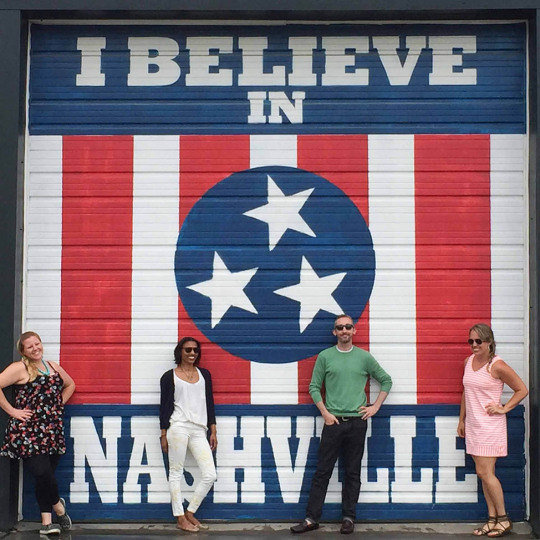
Still, whether you’re a local looking for a Spring Break staycation idea or traveling around Music City’s many neighborhoods on your next weekend getaway, I hope you’ll use this handy map as your guide—and drop descriptions of any murals you find that I may have missed in the comments so I can add them accordingly.
Note: This post was last updated in March 2019.
Germantown
The neighborhood I spend most of my time in thanks to my yoga studio’s location is also one that’s quite walkable and boasts a growing number of restaurants. Park your car near Werthan Lofts and hit up these walls and murals by foot.
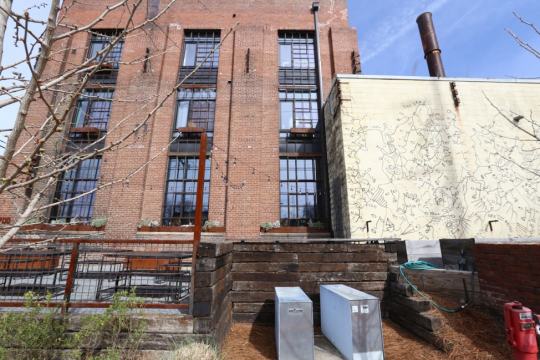

Rolf & Daughters wall, artist: Shantell Martin
700 Taylor St. at 7th Avenue North

Waves mural, artists: Eastside Murals
5th Avenue North and Monroe Street




Nashville scenes, artist: unknown
Rosa L Parks Boulevard and Taylor Street, across from Werthan Lofts

Saint Stephen (previously Mop | Broom), artist: Nathan Brown
1300 3rd Ave. N


Kindness Is, artist: Rebekah & Sarah
1120 4th Ave. N (on the side of Juice Bar Germantown)
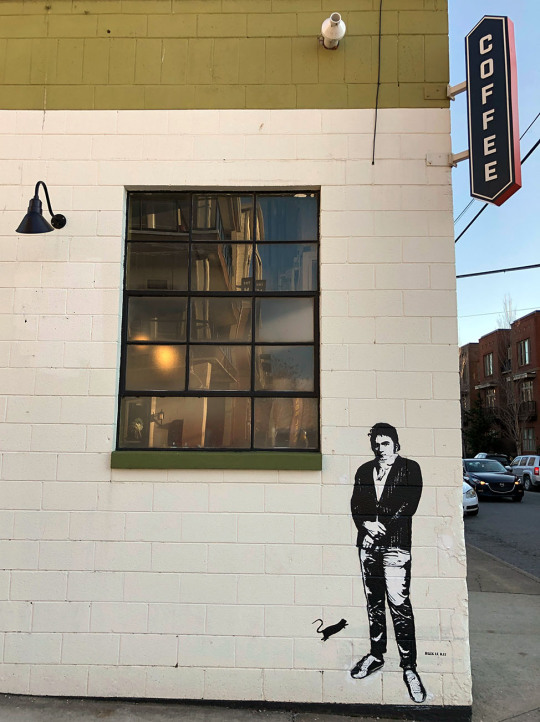
Beethoven graffiti, artist: Blek Le Rat
(on the side of Barista Parlor x Germantown)
Marathon Village
My friend Adrien Saporiti (formerly of DCXV Industries) is the brains behind the iconic “I Believe in Nashville” mural, which has been posted more than one million times from seven different continents and which you can now see in Marathon Village, Riverside Village and in 12South. I prefer the Marathon Village location as it’s usually devoid of large crowds (though parking is tricky), plus you can visit Nelson’s Greenbrier and Corsair distilleries while there.
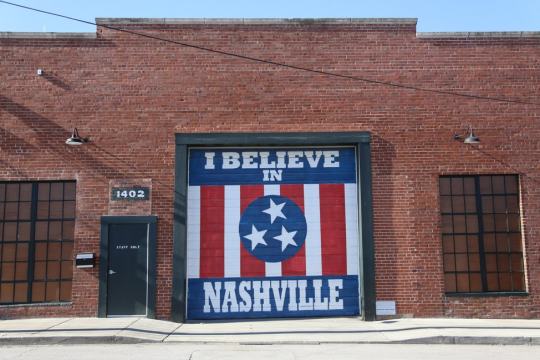
I Believe in Nashville murals, artist: Adrien Saporiti
Clinton Street, 625 Main St. and 2702 12th Ave. S
Jefferson Street Corridor
For those interested in Civil Rights history, there are some fascinating pieces along Jefferson near the Tennessee State University campus, particularly beneath the I-40 underpass.
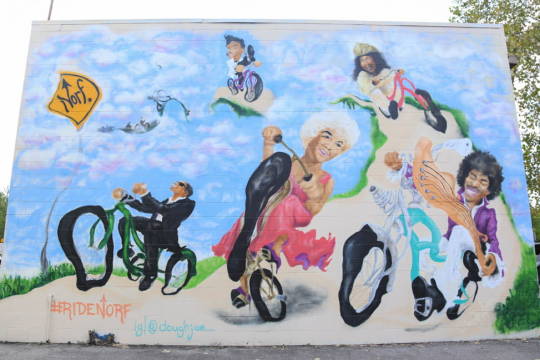
Green Fleet Bicycle Shop mural, artist: Dough Joe/Yusef Hubb
934 Jefferson St.

Gateway to Heritage murals, artists: various
Jefferson Street beneath I-40

blues singers mural, artist: unknown
Jefferson Street between 26th and 27th Avenues

Elks Lodge mural, artist: Dough Joe/Yusef Hubb
2614 Jefferson St.
The Gulch
The “Wings mural” as many call it became the first conversation starter in the Gulch, but a number of bright, splashy creations have joined the fray this year so it’s worth strolling down 11th Avenue South to see else what you may find.

#WhatLiftsYou Nashville Wings mural, artist: Kelsey Montague
11th Avenue South (near Biscuit Love/behind Taziki’s)

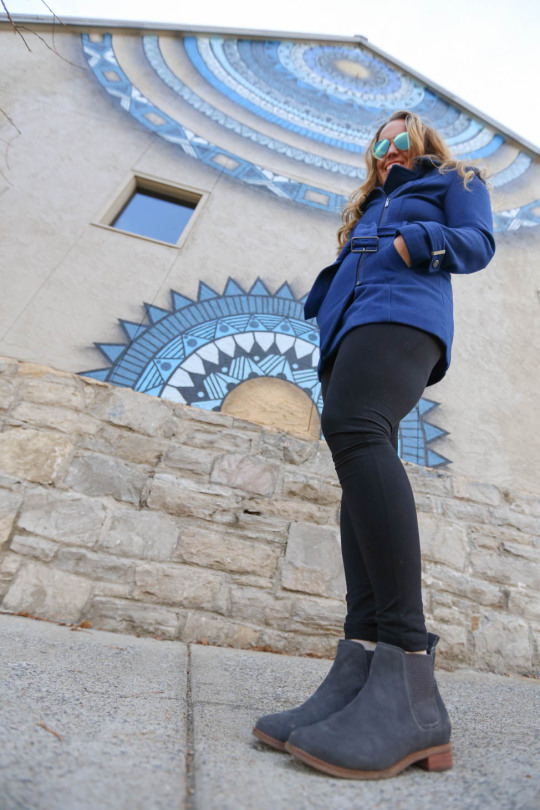
Google Fiber mural in the Gulch, artist: Chris Zidek
118 12th Ave. N (on the side of Whiskey Kitchen)

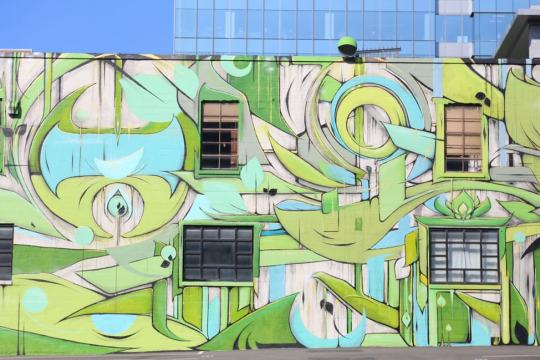
The Nashville Walls Project, artists: Ian Ross, Jason Woodside
11th Avenue South and Laurel Street
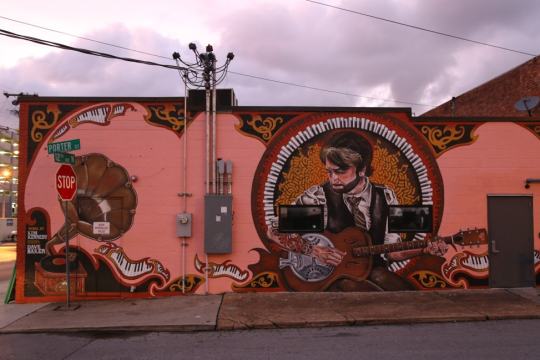
12th and Porter mural, artist: Kim Kennedy
114 12th Ave. N


Patagonia mural, artist: Nathan Brown
601 Overton St. (side of Patagonia)


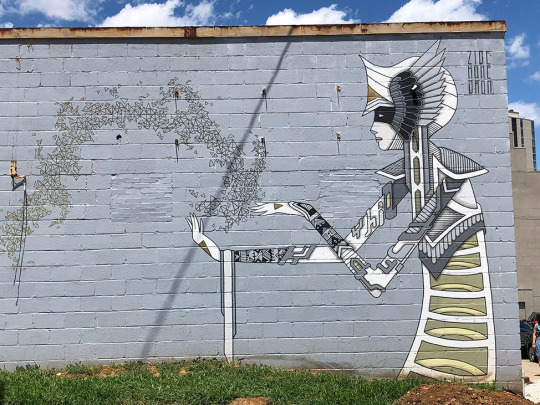
Note: The addition of Patagonia replaced this mural, which was one of my all-time favorites and a collaboration between Nathan Brown and Chris Zidek. I am happy, however, that Patagonia kept the general theme of the mural and also hired the same artist to do it!
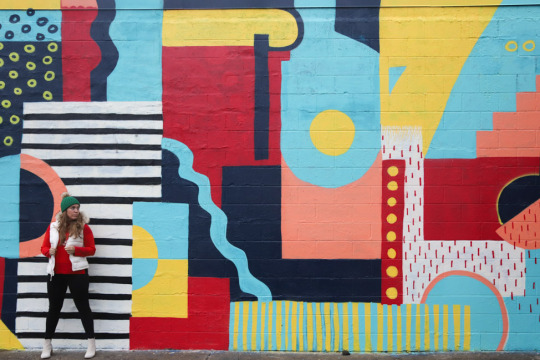
Plaza Artist Materials mural, artist: Maggie Sanger
633 Middleton St.
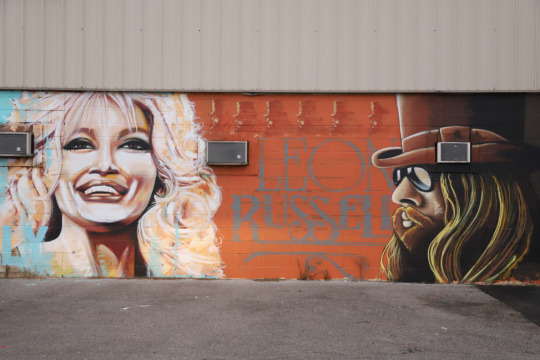

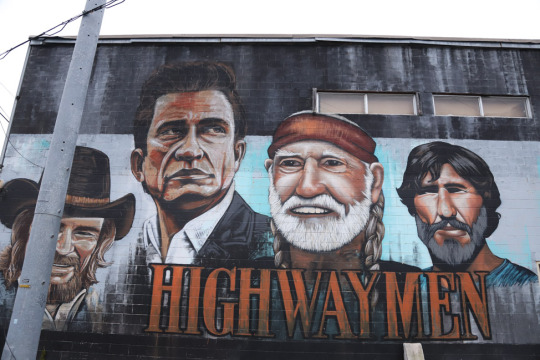
Country music icon murals (Dolly, Johnny, Loretta, etc.), artist: unknown
711 6th Ave. S (on the back of Ed’s Supply Company)
8th Avenue South + Wedgewood Houston
I predict this area rife in artist galleries and studios will be the next big neighborhood for murals if zoning codes don’t prevent them, but for now, you really have to go hunting to find them.

Pastel geometrics mural, artist: unknown
429B Houston St. (patio of Jackalope Brewing Company’s Ranch)

#OleAllDay Tennessee Tristar mural, artist: unknown
462 Humphreys St. (on the side of Ole Rights Management)
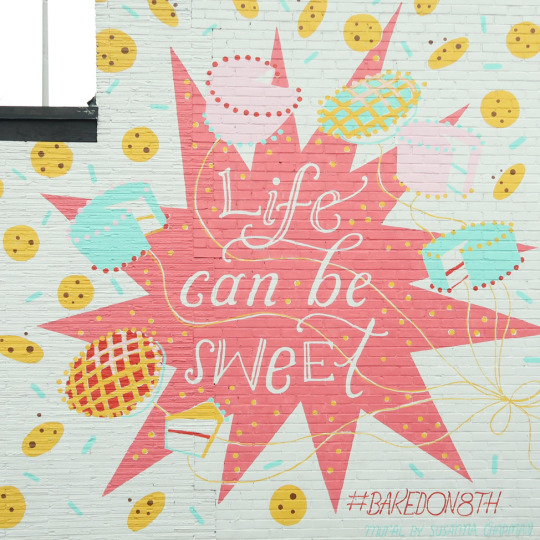
Life Can Be Sweet mural, artist: Susanna Chapman
1512 8th Ave. S (side of Baked on 8th)
Hillsboro Village
Hillsboro Village is changing dramatically; it’s now easier to arrive on foot than find parking. But if you can nab a coveted spot, there’s a paid lot behind Pancake Pantry just off Belcourt Avenue (be sure and get a ticket before you leave your car as meter maids here are brutal!). An hour is all you need to wander this small area on the Vanderbilt campus and snap a couple shots of its walls.
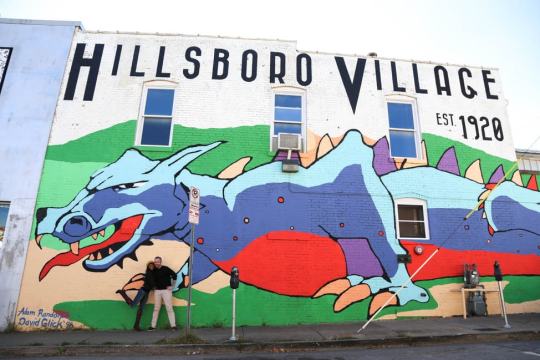
Hillsboro Village dragon mural, artists: David Glick, Adam Randolph
2102 Belcourt Ave. (across from the Belcourt Theatre)

Drippy Lips mural, artist: Donald “Drawbertson” Robertson
1814 21st Ave. S (on the side of UAL)
12South
12South is another one of those highly walkable ‘hoods with murals tucked around every corner. Park on one of the side streets—just make sure it’s not a residential-only parking area, as you will get a ticket—and walk from one length at Sevier Park to the other at 12South Flats.
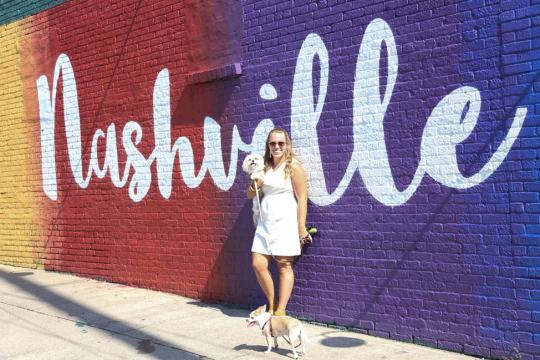
Nashville at Heart rainbow mural (former), artists: Eastside Murals
2705 12th Ave. S

Note: This has now been replaced with this Nashville #PeaceLoveGoodDeeds mural instead.


Draper James wall, artist: unknown
2608 12th Ave. S

12South flowers mural, artist: unknown
2900 12th Ave. S (the side of Green Pea Salon)

Make Music Not War mural, artist: Relax Max
2902 12th Ave. S (the side of Epice, across from Green Pea Salon)

Halycon Bike Shop mural, artist: Aaron Martin
2802 12th Ave. S
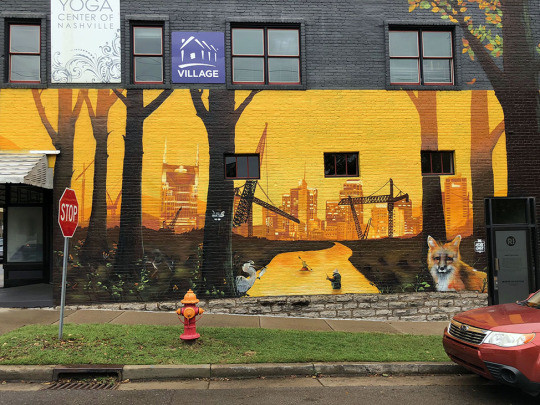
Rivive! 12South, artist: Mobe Oner
2814 12th Ave. S

12South graffiti, artist: unknown
12th Avenue South and Elmwood Avenue (photo credit: Joe Hendricks)
Charlotte Ave./Sylvan Park
Many of the murals along Charlotte Avenue are located along one stretch installed by Off the Wall Charlotte, a project backed by the Greater Nashville Arts & Business Council with several corporate sponsors. They’re a bit tricky to reach by foot, so I recommend parking in the lot in front of AVO and crossing the street at the traffic light with your photographer poised on the other side of the busy road.

Avocado mural, artist: unknown
3 City Ave. (side of AVO)
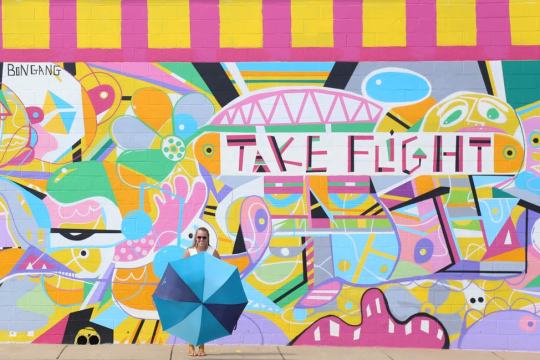
Take Flight mural, artist: Kevin Bongang / OFF the Wall Nashville
3020 Charlotte Ave. at 28th Avenue North

Fly Higher mural, artist: Joseph “Sentrock” Perez / OFF the Wall Nashville
3020 Charlotte Ave. at 28th Avenue North

It’s Gonna Be OK, artist: Sarah Tate / OFF the Wall Nashville
3020 Charlotte Ave. at 28th Avenue North

Scribbles, artist: Alic Daniel / OFF the Wall Nashville
3020 Charlotte Ave. at 28th Avenue North
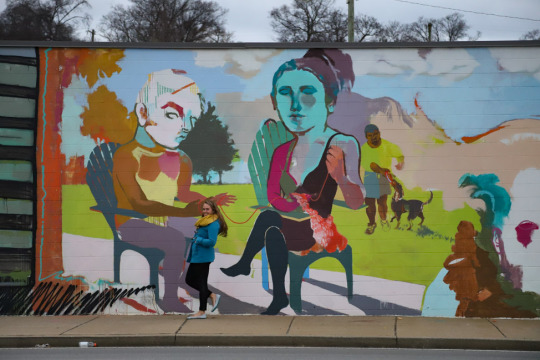
artist: Julia Martin / OFF the Wall Nashville
3020 Charlotte Ave. at 28th Avenue North

Jessi Zazu #AintAfraid mural, artist: Billy Lilly / OFF the Wall Nashville
3020 Charlotte Ave. at 28th Avenue North

Black Cat Tips mural, artist: Kyle Brooks / OFF the Wall Nashville
3020 Charlotte Ave. at 28th Avenue North

Import Flowers Nashville mural, artist: unknown
3636 Murphy Rd.
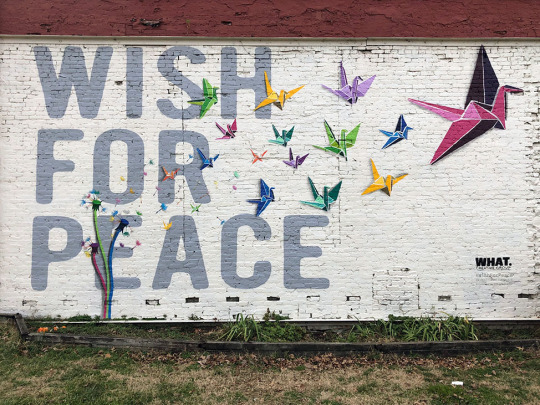
Wish for Peace mural, artist: WHAT. Creative Group
4822 Charlotte Ave.
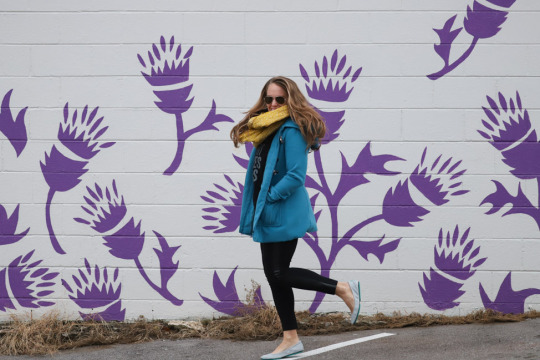
Love Heals Every Body mural, artist: Michael Cooper
5122 Charlotte Ave. (side of The Café at Thistle Farms)
The Nations
The Nations is very much up-and-coming, and this 160-foot-tall portrait of 91-year-old Nashville native Lee Estes painted on an old silo is one of its most famed residents. I love seeing more new businesses are commissioning pieces as a way to bring art lovers to this very hip ‘hood.

Silo mural, artist: Guido van Helten
1407 51st Ave. N
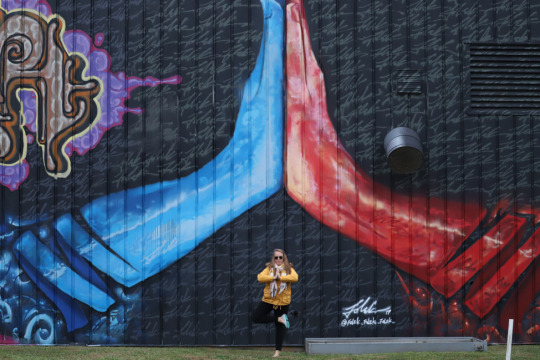
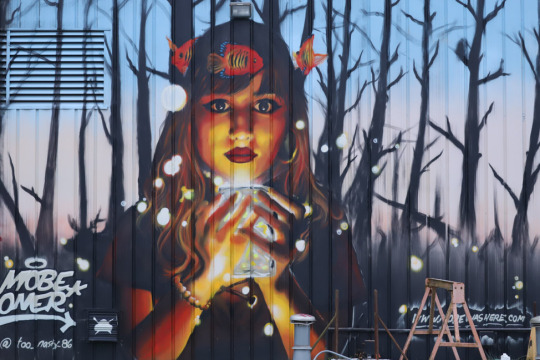



The Nations walls, artists: Mobe Oner, Zidekahedron, Folek
5901 California Ave. (side of Music City Tents & Events)

Beaujolais mural, artist: Chloe Meyer
5026 Centennial Blvd. (on the side of Nicky’s Coal Fired)
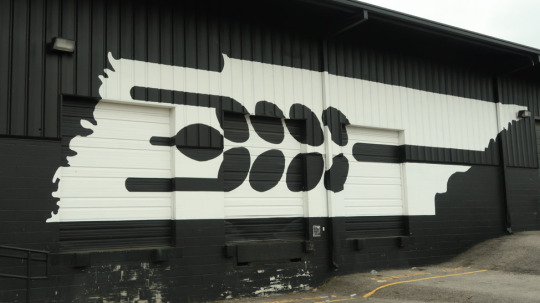
Tennessee state outline, artist: WHAT. Creative Group
5012 Centennial Blvd. (on the side of Southern Grist Brewing Co.)

“Play Well” Lego Man mural, artist: forBecks
1400 51st Ave N (front entrance to Frothy Monkey)
Music Row/Midtown
Midtown is getting a pop of color with some new street art painted down alleys and on parking garages. Music Row, which has a protected historic overlay, on the other hand, isn’t exactly brimming with street art, so you have to go in search of fun pieces like this by heading down Roy Acuff Lane on foot. Pro tip: Also grab a photo with the guitar installations outside of Studio B while you’re there.
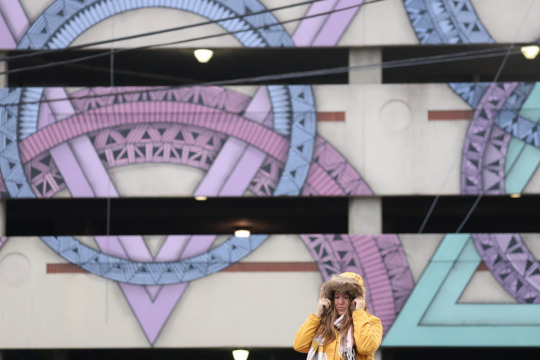
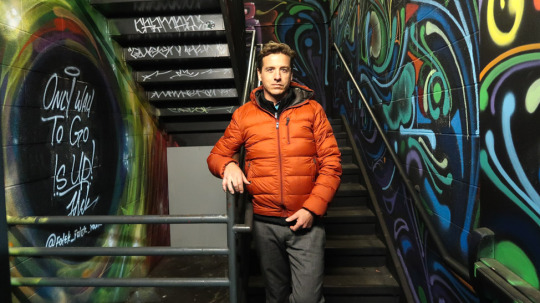
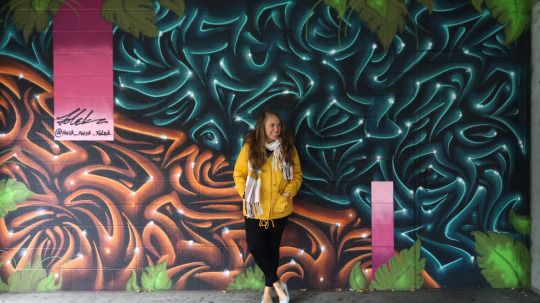
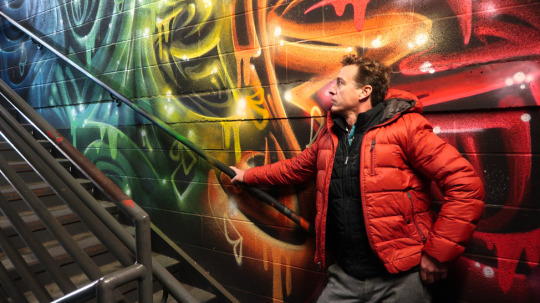

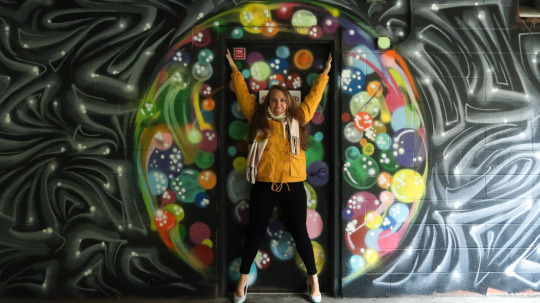


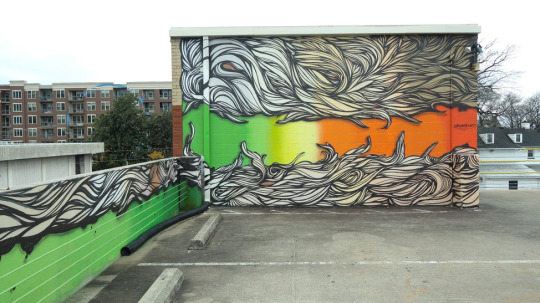
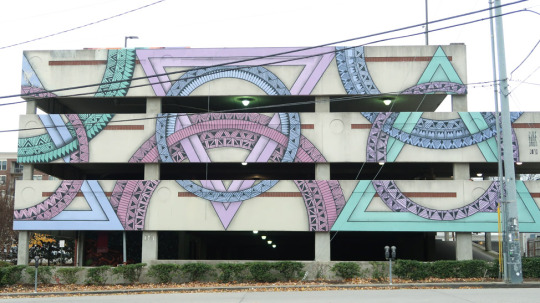
Elliston Parking Garage, Nashville Walls Project artists: Chris Zidek, Audi Adams, Folek, Chase, Brian Wooden, Tess Erlenborn, Daniel Lane, Mobe, Emily Miller, Nathan Brown.
207 Louise Ave. (across from Cafe Coco)

Hieroglitches mural, artist: Adrien Saporiti
2813 West End Ave. (beside the entrance to Three Brothers Coffee)
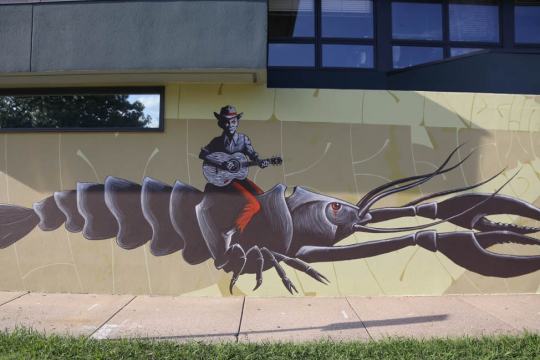

Dueling Cowboys mural, artist: Mike Shine
24 Music Square West (across the street from Historic RCA Studio B)

walls inside Le Sel, artist: Alic Daniel
1922 Adelicia St.
Downtown
Downtown is dotted with murals—like the Rainbow Walls that Instagram commissioned from Adrien Saporiti for IG’s #KindComments campaign in support of the LGBTQ community—but there are also a number of country music personalities like Johnny Cash who have their own dedicated pieces of art.
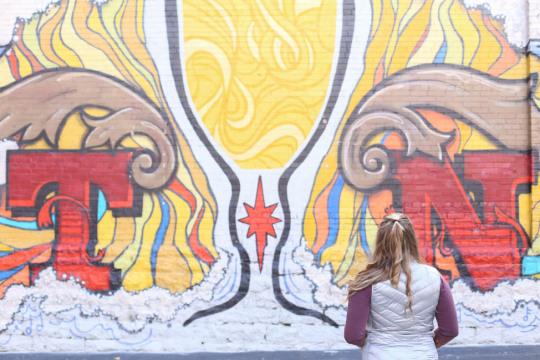
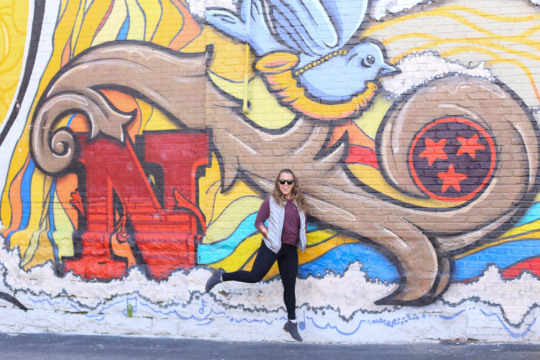

The Art of the Chalice, artists: Eastside Murals
174 3rd Ave. N (on the side of Piranha’s Bar & Grill)
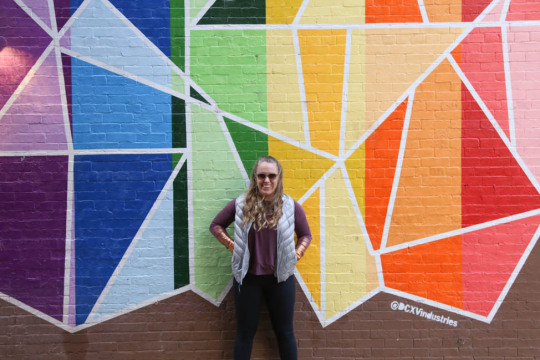
Instagram’s #KindComments Mural, artist: Adrien Saporiti
218 3rd Ave. N (on the side of Black Rabbit)
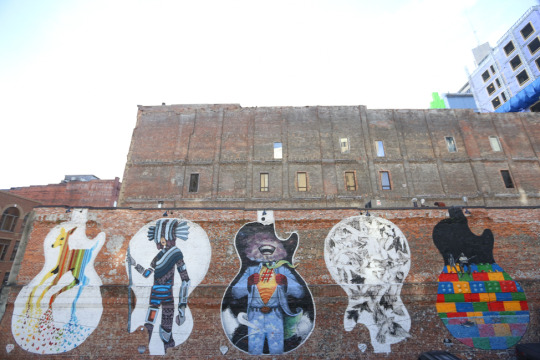
Gibson Tribute guitar wall, artists: Brandon Donahue, Chris Zidek, Emily Miller, Herb Williams, Sam Dunson
3rd Avenue N (across Printer’s Alley from Skulls)

Downtown dog mural, artist: Herakut
204 6th Ave. N (side of Nashville Finance Co.)



Downtown Presbyterian duo of murals, artist: Tavar Zawacki
5th Avenue N alley between Church and Commerce streets
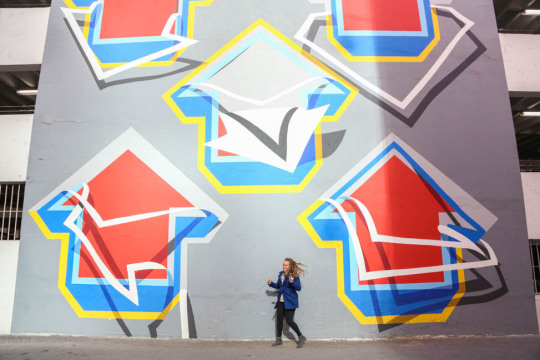
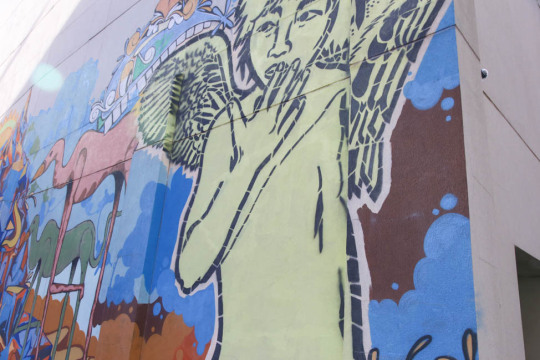
Curiot and Rone murals, artists: Favio Martinez, Tyrone Wright
Church Street between 6th Avenue S and St. Cloud Alley (side of Oscar’s Taco Shop)


Rivive! mural, artist: Beau Stanton
5th Avenue N and Commerce Street


The Wall of Cash mural, artists: Thoughts Manifested Crew
300 4th Ave. South
Note: This one is at risk of being torn down.
East Nashville
Of all the neighborhoods in town, East Nashville is the one most brimming with street art of all kinds—you’ll find it on the sides of buildings, you’ll see it hidden beneath construction zones, you’ll spy paintings on the backs of residential fences. The easiest way to see it all is to hop in the car with a friend and drive down Gallatin Pike to see what all you can find.

Stay Tuned Nashville mural, artist: Adrien Saporiti
Center 615 at 625 Main St.


Little Octopus mural, artist: Chris Zidek
604 Gallatin Ave.
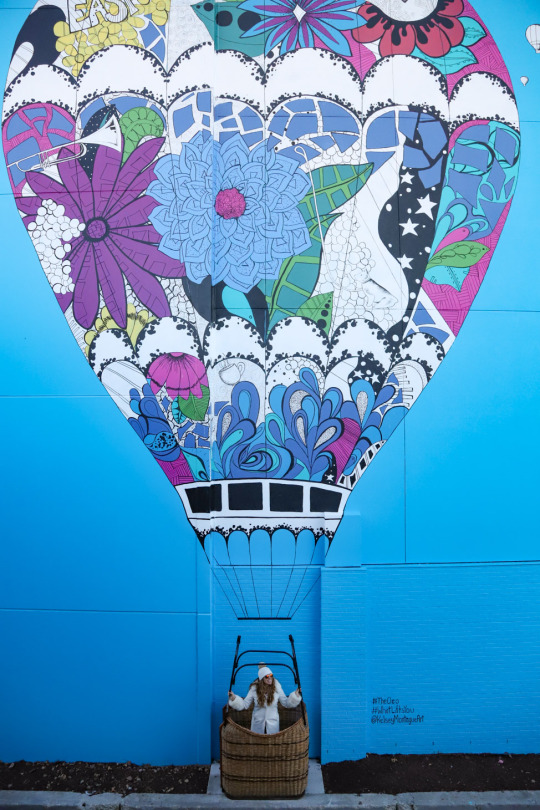
#WhatLiftsYou Hot Air Balloon mural, artist: Kelsey Montague
1034 W Eastland Ave. (side of the Cleo)
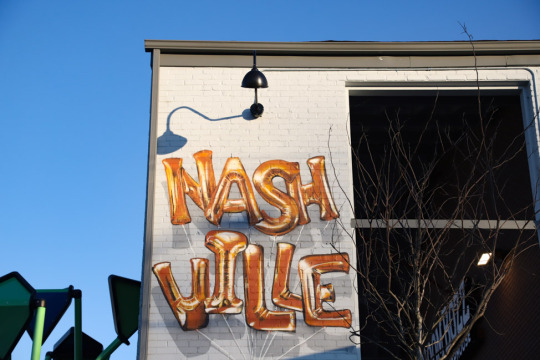
Nashville balloons mural, artist: Mobe Oner
1003 Russell St. (side of Boombozz East Nashville)


Google Fiber geometrics mural, artist: Nathan Brown
1012 Woodland St. (on the side of Five Points Pizza)
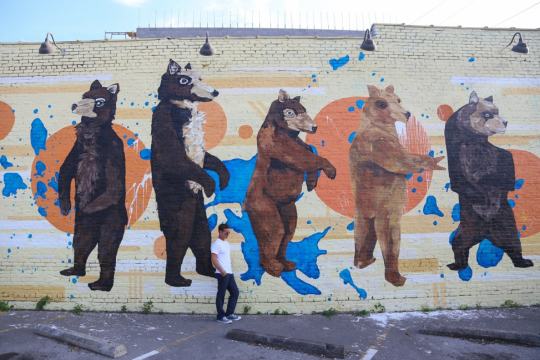
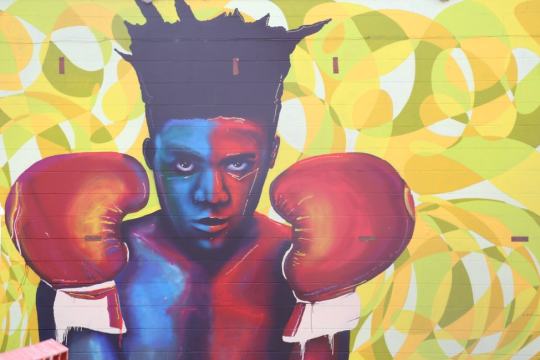

Five Points murals, artists: Leah Tumerman, Sterling Goller Brown
103 South 11th St. (on the side of and behind Eastside Cycles)

East Nashville Center 615 mural, artist: Folek
626 Main St.


Cactus murals, artist: unknown
N. 7th St. on the alleyway between Main and Woodland streets
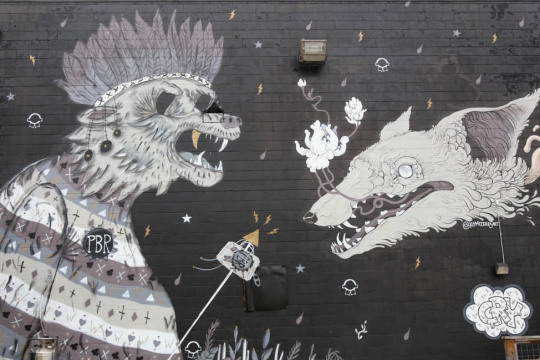
The Crying Wolf mural, artist: Denton Burrows, Lauren Asta
823 Woodland St.
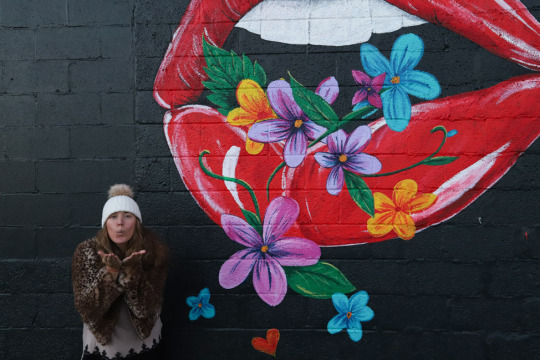

Flowers of Walden, artist: Tara Aversa
2909 Gallatin Pk. (side of Walden bar and also inside the bar)
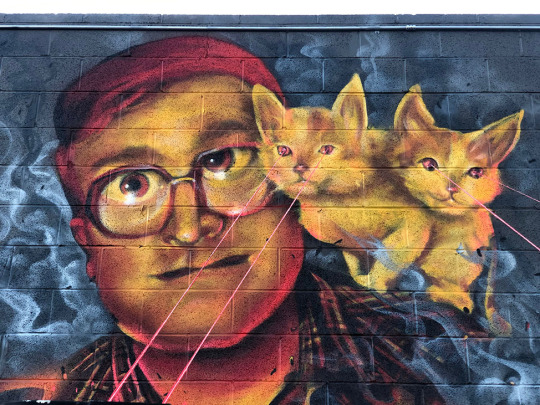
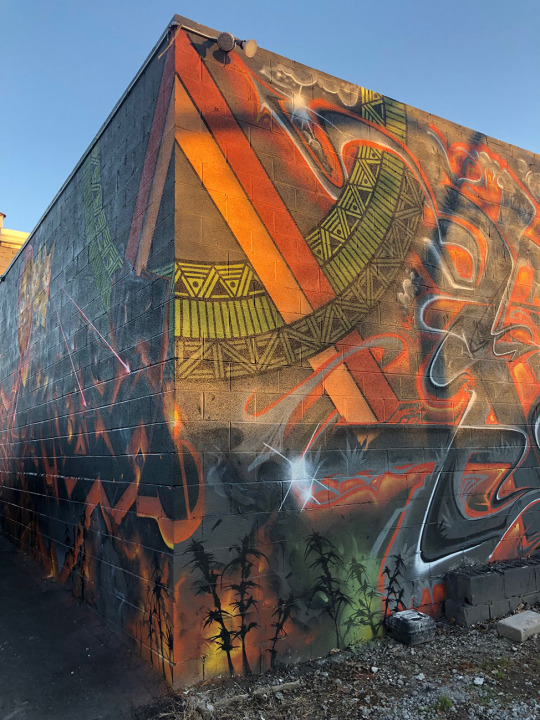
Trailer Park Boys mural, artists: Mobe Oner, Zidekahedron, Folek
1006 Gallatin Ave. (on the side of LabCanna East)

The Athens of the South mural, artist: Mobe Oner
704 Main St. (on the side of Greko Greek Street Food)



Jerry’s Artarama, artist: unknown
713 Main St.
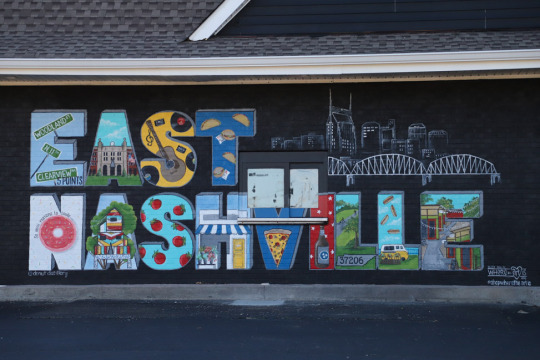
East Nashville sign mural, artist: unknown
311 Gallatin Ave.

Microsoft mural, artist: Bryan Deese
1106 Gallatin Ave.


The Cobra mural, artists: Eastside Murals
2511 Gallatin Ave.



Betor Forever mural, artist: Ronnie Bobal
Gallatin Pike and Carolyn Avenue (on the side of Pocket Monkey Recycling)

Mother Earth mural, artist: Skye Walker x Keep A Breast
500 Gallatin Ave. (on the side of Hair World Beauty Supply)


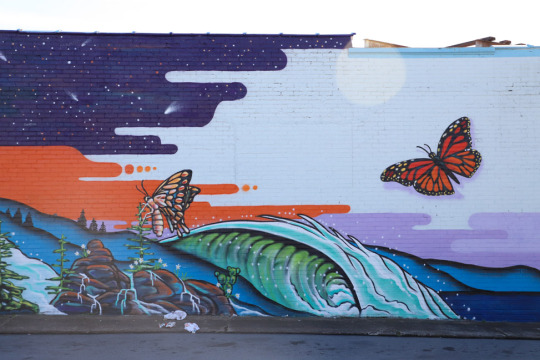
Mountain Woman mural, artist: Skye Walker
500 Gallatin Ave. (on the side of Hair World Beauty Supply)

“Welcome to Nashville” pig mural, artist: Kim Radford
1306 McGavock Pk. (on the side of Mitchell Delicatessen)
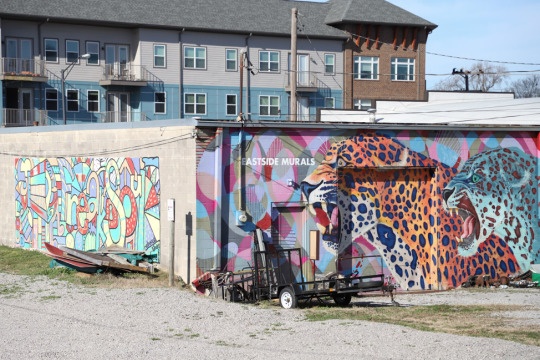
Cheetah mural, artists: Eastside Murals
visible from the parking lot of Stay Golden East
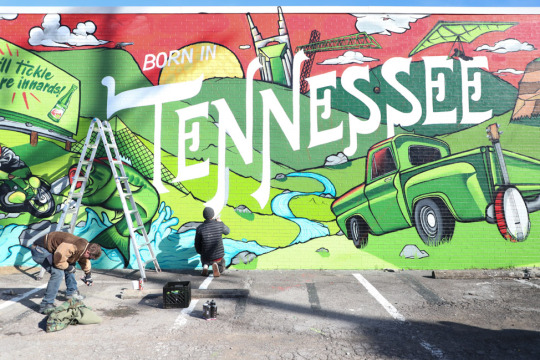
Born in Tennessee mural, artists: Eastside Murals
Woodland and S. 10th streets (Five Points intersection)
**********
There will always be new murals left to photograph, so I’ll add to this list as I find them. Feel free to drop me a note in the comments highlighting any murals I’ve missed so far!

Looking for other things to do in Nashville? I’ve got you:
Planning an Adult Bachelorette in Nashville
Date Night at the Grand Ole Opry
An Epic Nashville Weekend Itinerary
The Best Restaurants & Bars in Nashville
PIN IT HERE



from Camels & Chocolate: Travel & Lifestyles Blog https://ift.tt/2kKbatl
3 notes
·
View notes
Link
#Book spots#Reading spots#confessionsofabookfreak#booklover#bookworm#bookblog#bookblogger#bookworld#books of tumblr#tumblr books#readers of tumblr#booklove#bookcommunity#book love#bookish#bookobsessed#bookgram#bookshark#booknerd#cafes#tea#coffee#alwaysreading#reader#Taylor St. Baristas#teashop#coffeeshop#timekiller
0 notes
Text
Robots May Perform Half The Jobs In The US Within 20 Years: Here's What That Could Mean
Perhaps you don’t think the change that is upon us is a profound one. But consider this: Within two decades, half the jobs in this country may be performed by robots. What then of our unemployment rate? And what of our social safety net?
Opinion is divided. Will the next technological wave further skew the wealth distribution toward the uber-rich? Or will it ultimately create more entrepreneurial and job opportunities than it destroys?
There is an interesting historical precedent for our situation. It was an era during which the technological firmament shifted just as abruptly as it is here and now.
The Industrial Revolution Makes Waves
In the UK in the year 1800, the textile industry dominated economic life. Particularly in Northern England and Scotland. Cotton-spinners, weavers (mostly of stockings), and croppers (who trimmed large sheets of woven wool) worked from home. They were well compensated and enjoyed ample leisure time.
Ten years later, that had all changed. Clive Thompson tells us what happened:
(I)n the first decade of the 1800s, the textile economy went into a tailspin.… The merchant class—the overlords who paid hosiers and croppers and weavers for the work—began looking for ways to shrink their costs.
That meant reducing wages—and bringing in more technology to improve efficiency… They also began to build huge factories where coal-burning engines would propel dozens of automated cotton-weaving machines….
The workers were livid. Factory work was miserable, with brutal 14-hour days that left workers—as one doctor noted—‘stunted, enfeebled, and depraved.’… Poverty rose as wages plummeted.
Workers Fight Back
Enter the notorious Luddites. Angry workers began to fight back. They destroyed the hated wide stocking frames and cotton-spinning machinery. They even killed factory owners.
Soon, they were breaking at least 175 machines per month. And within months, they had destroyed some 800, worth £25,000—the equivalent of nearly $2 million today.
Source: Wikimedia
As we know, the owners retaliated. The English government intervened decisively. The Luddite rebellion was crushed. However, says Thompson,
At heart, the fight was not really about technology. The Luddites were happy to use machinery—indeed, weavers had used smaller frames for decades. What galled them was the new logic of industrial capitalism, where the productivity gains from new technology enriched only the machines’ owners and weren’t shared with the workers.
The owners had taken to heart Adam Smith’s The Wealth of Nations. The book was published a few decades earlier. In it, Smith makes the case for a laissez-faire, free-market economy.
In the ensuing centuries we have seen a seesaw battle between labor and capital. It certainly appears that capital now has the upper hand. But clearly, the Industrial Revolution did lift all boats.
Can you imagine trying to support our present global population without our machines?
What About Our Future?
The Information Revolution gave us computers, the Internet, and social media. The AI Revolution is about to give us self-driving taxis and trucks and robot baristas.
Will these continue to lift our lower and middle classes? Or will they further disempower and impoverish them? Here’s what Clive Thompson thinks.
When Robots Take All Of Our Jobs, Remember The Luddites
By Clive Thompson
What a 19th-century rebellion against automation can teach us about the coming war in the job market
Is a robot coming for your job?
The odds are high, according to recent economic analyses. Indeed, fully 47 percent of all US jobs will be automated “in a decade or two,” as the tech-employment scholars Carl Frey and Michael Osborne have predicted. That’s because artificial intelligence and robotics are becoming so good that nearly any routine task could soon be automated. Robots and AI are already whisking products around Amazon’s huge shipping centers, diagnosing lung cancer more accurately than humans, and writing sports stories for newspapers.
They’re even replacing cabdrivers. Last year in Pittsburgh, Uber put its first-ever self-driving cars into its fleet: Order an Uber and the one that rolls up might have no human hands on the wheel at all. Meanwhile, Uber’s “Otto” program is installing AI in 16-wheeler trucks—a trend that could eventually replace most or all 1.7 million drivers, an enormous employment category. Those jobless truckers will be joined by millions more telemarketers, insurance underwriters, tax preparers, and library technicians—all jobs that Frey and Osborne predicted have a 99 percent chance of vanishing in a decade or two.
What happens then? If this vision is even halfway correct, it’ll be a vertiginous pace of change, upending work as we know it. As the last election amply illustrated, a big chunk of Americans already hotly blame foreigners and immigrants for taking their jobs. How will Americans react to robots and computers taking even more?
One clue might lie in the early 19th century. That’s when the first generation of workers had the experience of being suddenly thrown out of their jobs by automation. But rather than accept it, they fought back—calling themselves the “Luddites,” and staging an audacious attack against the machines.
**********
At the turn of 1800, the textile industry in the United Kingdom was an economic juggernaut that employed the vast majority of workers in the North. Working from home, weavers produced stockings using frames, while cotton-spinners created yarn. “Croppers” would take large sheets of woven wool fabric and trim the rough surface off, making it smooth to the touch.
These workers had great control over when and how they worked—and plenty of leisure. “The year was checkered with holidays, wakes, and fairs; it was not one dull round of labor,” as the stocking-maker William Gardiner noted gaily at the time. Indeed, some “seldom worked more than three days a week.” Not only was the weekend a holiday, but they took Monday off too, celebrating it as a drunken “St. Monday.”
Croppers in particular were a force to be reckoned with. They were well-off—their pay was three times that of stocking-makers—and their work required them to pass heavy cropping tools across the wool, making them muscular, brawny men who were fiercely independent. In the textile world, the croppers were, as one observer noted at the time, “notoriously the least manageable of any persons employed.”
But in the first decade of the 1800s, the textile economy went into a tailspin. A decade of war with Napoleon had halted trade and driven up the cost of food and everyday goods. Fashions changed, too: Men began wearing “trousers,” so the demand for stockings plummeted. The merchant class—the overlords who paid hosiers and croppers and weavers for the work—began looking for ways to shrink their costs.
That meant reducing wages—and bringing in more technology to improve efficiency. A new form of shearer and “gig mill” let one person crop wool much more quickly. An innovative, “wide” stocking frame allowed weavers to produce stockings six times faster than before: Instead of weaving the entire stocking around, they’d produce a big sheet of hosiery and cut it up into several stockings. “Cut-ups” were shoddy and fell apart quickly, and could be made by untrained workers who hadn’t done apprenticeships, but the merchants didn’t care. They also began to build huge factories where coal-burning engines would propel dozens of automated cotton-weaving machines.
“They were obsessed with keeping their factories going, so they were introducing machines wherever they might help,” says Jenny Uglow, a historian and author of In These Times: Living in Britain Through Napoleon’s Wars, 1793-1815.
The workers were livid. Factory work was miserable, with brutal 14-hour days that left workers—as one doctor noted—“stunted, enfeebled, and depraved.” Stocking-weavers were particularly incensed at the move toward cut-ups. It produced stockings of such low quality that they were “pregnant with the seeds of its own destruction,” as one hosier put it. Pretty soon people wouldn’t buy any stockings if they were this shoddy. Poverty rose as wages plummeted.
The workers tried bargaining. They weren’t opposed to machinery, they said, if the profits from increased productivity were shared. The croppers suggested taxing cloth to make a fund for those unemployed by machines. Others argued that industrialists should introduce machinery more gradually, to allow workers more time to adapt to new trades.
The plight of the unemployed workers even attracted the attention of Charlotte Brontë, who wrote them into her novel Shirley. “The throes of a sort of moral earthquake,” she noted, “were felt heaving under the hills of the northern counties.”
**********
In mid-November 1811, that earthquake began to rumble. That evening, according to a report at the time, half a dozen men—with faces blackened to obscure their identities, and carrying “swords, firelocks, and other offensive weapons”—marched into the house of master-weaver Edward Hollingsworth in the village of Bulwell. They destroyed six of his frames for making cut-ups. A week later, more men came back and this time they burned Hollingsworth’s house to the ground. Within weeks, attacks spread to other towns. When panicked industrialists tried moving their frames to a new location to hide them, the attackers would find the carts and destroy them en route.
A modus operandi emerged: The machine-breakers would usually disguise their identities and attack the machines with massive metal sledgehammers. The hammers were made by Enoch Taylor, a local blacksmith; since Taylor himself was also famous for making the cropping and weaving machines, the breakers noted the poetic irony with a chant: “Enoch made them, Enoch shall break them!”
Most notably, the attackers gave themselves a name: the Luddites.
Before an attack, they’d send a letter to manufacturers, warning them to stop using their “obnoxious frames” or face destruction. The letters were signed by “General Ludd,” “King Ludd” or perhaps by someone writing “from Ludd Hall”—an acerbic joke, pretending the Luddites had an actual organization.
Despite their violence, “they had a sense of humor” about their own image, notes Steven Jones, author of Against Technology and a professor of English and digital humanities at the University of South Florida. An actual person Ludd did not exist; probably the name was inspired by the mythic tale of “Ned Ludd,” an apprentice who was beaten by his master and retaliated by destroying his frame.
Ludd was, in essence, a useful meme—one the Luddites carefully cultivated, like modern activists posting images to Twitter and Tumblr. They wrote songs about Ludd, styling him as a Robin Hood-like figure: “No General But Ludd / Means the Poor Any Good,” as one rhyme went. In one attack, two men dressed as women, calling themselves “General Ludd’s wives.” “They were engaged in a kind of semiotics,” Jones notes. “They took a lot of time with the costumes, with the songs.”
And “Ludd” itself! “It’s a catchy name,” says Kevin Binfield, author of Writings of the Luddites. “The phonic register, the phonic impact.”
As a form of economic protest, machine-breaking wasn’t new. There were probably 35 examples of it in the previous 100 years, as the author Kirkpatrick Sale found in his seminal history Rebels Against the Future. But the Luddites, well organized and tactical, brought a ruthless efficiency to the technique: Barely a few days went by without another attack, and they were soon breaking at least 175 machines per month. Within months they had destroyed probably 800, worth £25,000—the equivalent of $1.97 million, today.
“It seemed too many people in the South like the whole of the North was sort of going up in flames,” Uglow notes. “In terms of industrial history, it was a small industrial civil war.”
Factory owners began to fight back. In April 1812, 120 Luddites descended upon Rawfolds Mill just after midnight, smashing down the doors “with a fearful crash” that was “like the felling of great trees.” But the mill owner was prepared: His men threw huge stones off the roof, and shot and killed four Luddites. The government tried to infiltrate Luddite groups to figure out the identities of these mysterious men, but to little avail. Much as in today’s fractured political climate, the poor despised the elites—and favored the Luddites. “Almost every creature of the lower order both in town & country are on their side,” as one local official noted morosely.
An 1812 handbill sought information about the armed men who destroyed five machines. (The National Archives, UK)
**********
At heart, the fight was not really about technology. The Luddites were happy to use machinery—indeed, weavers had used smaller frames for decades. What galled them was the new logic of industrial capitalism, where the productivity gains from new technology enriched only the machines’ owners and weren’t shared with the workers.
The Luddites were often careful to spare employers who they felt dealt fairly. During one attack, Luddites broke into a house and destroyed four frames—but left two intact after determining that their owner hadn’t lowered wages for his weavers. (Some masters began posting signs on their machines, hoping to avoid destruction: “This Frame Is Making Full Fashioned Work, at the Full Price.”)
For the Luddites, “there was the concept of a ‘fair profit,’” says Adrian Randall, the author of Before the Luddites. In the past, the master would take a fair profit, but now he adds, “the industrial capitalist is someone who is seeking more and more of their share of the profit that they’re making.” Workers thought wages should be protected with minimum-wage laws. Industrialists didn’t: They’d been reading up on laissez-faire economic theory in Adam Smith’s The Wealth of Nations, published a few decades earlier.
“The writings of Dr. Adam Smith have altered the opinion of the polished part of society,” as the author of a minimum wage proposal at the time noted. Now, the wealthy believed that attempting to regulate wages “would be as absurd as an attempt to regulate the winds.”
Six months after it began, though, Luddism became increasingly violent. In broad daylight, Luddites assassinated William Horsfall, a factory owner, and attempted to assassinate another. They also began to raid the houses of everyday citizens, taking every weapon they could find.
Parliament was now fully awakened, and began a ferocious crackdown. In March 1812, politicians passed a law that handed out the death penalty for anyone “destroying or injuring any Stocking or Lace Frames, or other Machines or Engines used in the Framework knitted Manufactory.” Meanwhile, London flooded the Luddite counties with 14,000 soldiers.
By winter of 1812, the government was winning. Informants and sleuthing finally tracked down the identities of a few dozen Luddites. Over a span of 15 months, 24 Luddites were hanged publicly, often after hasty trials, including a 16-year-old who cried out to his mother on the gallows, “thinking that she had the power to save him.” Another two dozen were sent to prison and 51 were sentenced to be shipped off to Australia.
“They were show trials,” says Katrina Navickas, a history professor at the University of Hertfordshire. “They were put on to show that [the government] took it seriously.” The hangings had the intended effect: Luddite activity more or less died out immediately.
It was a defeat not just of the Luddite movement, but in a grander sense, of the idea of “fair profit”—that the productivity gains from machinery should be shared widely. “By the 1830s, people had largely accepted that the free-market economy was here to stay,” Navickas notes.
A few years later, the once-mighty croppers were broken. Their trade destroyed, most eked out a living by carrying water, scavenging, or selling bits of lace or cakes on the streets.
“This was a sad end,” one observer noted, “to an honorable craft.”
**********
These days, Adrian Randall thinks technology is making cab-driving worse. Cabdrivers in London used to train for years to amass “the Knowledge,” a mental map of the city’s twisty streets. Now GPS has made it so that anyone can drive an Uber—so the job has become deskilled. Worse, he argues, the GPS doesn’t plot out the fiendishly clever routes that drivers used to. “It doesn’t know what the shortcuts are,” he complains. We are living, he says, through a shift in labor that’s precisely like that of the Luddites.
Economists are divided as to how profound the dis-employment will be. In his recent book Average Is Over, Tyler Cowen, an economist at George Mason University, argued that automation could produce profound inequality. A majority of people will find their jobs taken by robots and will be forced into low-paying service work; only a minority—those highly skilled, creative and lucky—will have lucrative jobs, which will be wildly better paid than the rest. Adaptation is possible, though, Cowen says, if society creates cheaper ways of living—“denser cities, more trailer parks.”
Erik Brynjolfsson is less pessimistic. An MIT economist who co-authored The Second Machine Age, he thinks automation won’t necessarily be so bad. The Luddites thought machines destroyed jobs, but they were only half right: They can also, eventually, create new ones. “A lot of skilled artisans did lose their jobs,” Brynjolfsson says, but several decades later demand for labor rose as new job categories emerged, like office work. “Average wages have been increasing for the past 200 years,” he notes. “The machines were creating wealth!”
The problem is that transition is rocky. In the short run, automation can destroy jobs more rapidly than it creates them—sure, things might be fine in a few decades, but that’s cold comfort to someone in, say, their 30s. Brynjolfsson thinks politicians should be adopting policies that ease the transition—much as in the past, when public education and progressive taxation and antitrust law helped prevent the 1 percent from hogging all the profits. “There’s a long list of ways we’ve tinkered with the economy to try and ensure shared prosperity,” he notes.
Will there be another Luddite uprising? Few of the historians thought that was likely. Still, they thought one could spy glimpses of Luddite-style analysis—questioning of whether the economy is fair—in the Occupy Wall Street protests, or even in the environmental movement. Others point to online activism, where hackers protest a company by hitting it with “denial of service” attacks by flooding it with so much traffic that it gets knocked offline.
Perhaps one day, when Uber starts rolling out its robot fleet in earnest, angry out-of-work cabdrivers will go online—and try to jam up Uber’s services in the digital world.
“As work becomes more automated, I think that’s the obvious direction,” as Uglow notes. “In the West, there’s no point in trying to shut down a factory.”
**********
Get Varying Expert Opinions in One Publication with John Mauldin’s Outside the Box
Every week, celebrated economic commentator John Mauldin highlights a well-researched, controversial essay from a fellow economic expert. Whether you find them inspiring, upsetting, or outrageous… they’ll all make you think Outside the Box. Get the newsletter free in your inbox every Wednesday.
2 notes
·
View notes
Text
Karma raises $12M to let restaurants and grocery stores offer unsold food at a discount
Karma, the Stockholm-based startup that offers a marketplace to let local restaurants and grocery offer unsold food at a discount, has raised $12 million in Series A funding.
Swedish investment firm Kinnevik led the round, with participation from U.S. venture capital firm Bessemer Venture Partners, appliance manufacturer Electrolux, and previous backer VC firm e.ventures. It brings total funding to $18 million.
Founded in late 2015 by Hjalmar Ståhlberg Nordegren, Ludvig Berling, Mattis Larsson and Elsa Bernadotte, and launched the following year, Karma is an app-based marketplace that helps restaurants and grocery stores reduce food waste by selling unsold food at a discount direct to consumers.
You simply register your location with the iOS or Android app and can browse various food merchants and the food items/dishes they have put on sale. Once you find an item to your liking, you pay through the Karma app and pick up the food before closing time. You can also follow your favourite establishments and be alerted when new food is listed each day.
“One third of of all food produced is wasted,” Karma CEO Ståhlberg Nordegren tells me. “We’re reducing food waste by enabling restaurants and grocery stores to sell their surplus food through our app… Consumers like you and me can then buy the food directly through the app and pick it up as take away at the location. We’re helping the seller reduce food waste and increase revenue, consumers get great food at a reduced price, and we help the environment redistributing food instead of wasting it”.
Since Karma’s original launch in its home country of Sweden, the startup has expanded to work with over 1,500 restaurants, grocery stores, hotels, cafes and bakeries to help reduce food waste by selling surplus food to 350,000 Karma users. It counts three of Sweden’s largest supermarkets as marketplace partners, as well as premium restaurants such as Ruta Baga and Marcus Samuelsson’s Kitchen & Table, and major brands such as Sodexo, Radisson and Scandic Hotels.
In February, the company expanded to the U.K., and is already working with over 400 restaurants in London. They include brands such as Aubaine, Polpo, Caravan, K10, Taylor St Barista’s, Ned’s Noodle Bar, and Detox Kitchen.
Ståhlberg Nordegren says Karma’s most frequent users are young professionals between the age of 25-40, who typically work in the city and pick up Karma on their way home. “Students and the elderly also love the app as it’s a great way to discover really good food for less,” he adds.
Meanwhile, will use the funding to continue to develop its product range, especially within supermarkets, and to expand to new markets, starting with Europe. The company plans to expand from 35 people based in Stockholm today to over 100 across 5 markets by the end of next year and over 150 by mid 2020.
youtube
0 notes
Photo

here's a find: #coffee and #zohar at #taylorstbaristas #stpauls #london in #svg #vectorart #kabbalah (at Taylor St Baristas)
1 note
·
View note